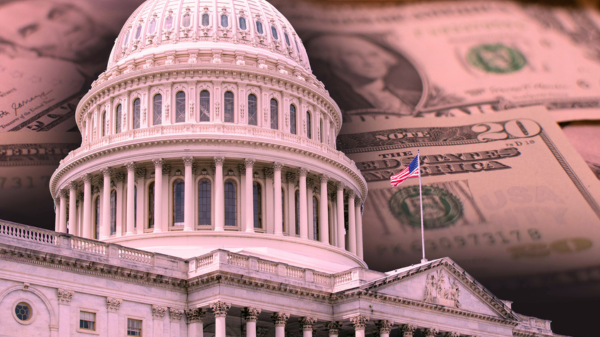What constitutes an emergency? According to Congress’ new spending package, research equipment and facilities for the National Science Foundation is an emergency. So are the 2024 Democratic National Committee convention and the Republican National Committee convention. So is NASA space exploration.
By classifying all these line items as emergencies, Congress can get hundreds of millions of taxpayer funding for them with reduced oversight.
Congress’ latest spending package, released this week, is hardly the first time obviously nonemergency projects have been given this special funding designation. According to a January report from the Cato Institute, Congress has approved over $12 trillion in spending for emergencies over the past three decades, making up around 1 in 10 federal budget dollars spent—more than both Medicaid and veterans programs combined.
How is this possible? Much of it comes down to lax rules that let lawmakers classify regular spending projects as “emergencies.”
“Congress has complete discretion in designating spending for emergencies because what qualifies as an emergency is subject to interpretation,” Romina Boccia and Dominik Lett wrote in Cato’s report. While the Office of Management and Budget (OMB) has laid out several criteria that emergency spending is supposed to meet, Boccia and Lett note that “the current process lacks a mechanism to evaluate whether an emergency provision meets the OMB’s test, which means that anything can count as emergency spending.”
Once spending gets earmarked as an emergency, it isn’t subjected to typical caps on discretionary spending, allowing Congress to rack up costs with little accountability. “Unfortunately, over the course of the last 30-some years, Congress took what was designed to be a ‘break glass in case of emergency’ escape valve, and they’ve turned it into a major source of funding for federal activity,” David Ditch, a senior policy analyst at The Heritage Foundation, tells Reason.”It’s just a way for [Congress] to avoid fiscal consequences. And that’s part of how we got where we are.”
“Emergencies are, by definition, unexpected and urgent situations requiring immediate action—except in Congress, where the term is increasingly used to justify spending decisions that should be part of the normal budget process,” Eric Boehm pointed out in the April 2024 issue of Reason magazine, “Because emergency spending bypasses some of the scrutiny applied to the normal budgetary process, it has become a convenient way for lawmakers and presidents to hike spending—and add to the national debt.”
Cato’s report highlights some particularly egregious examples of this exact phenomenon, including $600 million earmarked for replacing aircraft used in weather forecasting, $347 million for prison construction and detention costs, and $278 million to speed up the building process for a single research center.
“To me, the original sin in all of this is too many members of Congress don’t care at all about where the money comes from, all they care about is getting as much money out the door that they can take credit for,” says Ditch. “They’re more concerned with their next reelection than they are with the nation’s trajectory 20 and 30 years down the line.”
Originally published by Reason Foundation. Republished with permission.
For more great content from Budget and Tax News.
For more from The Heartland Institute.











